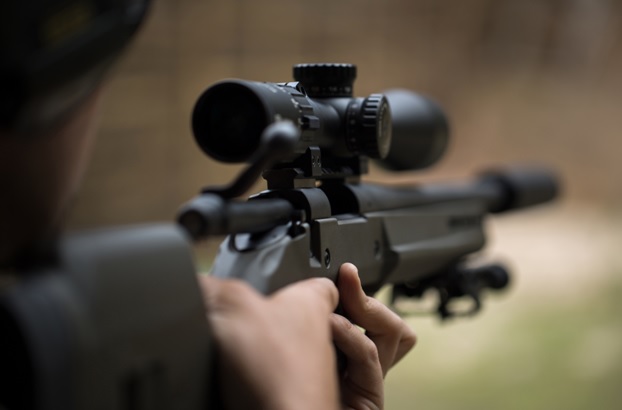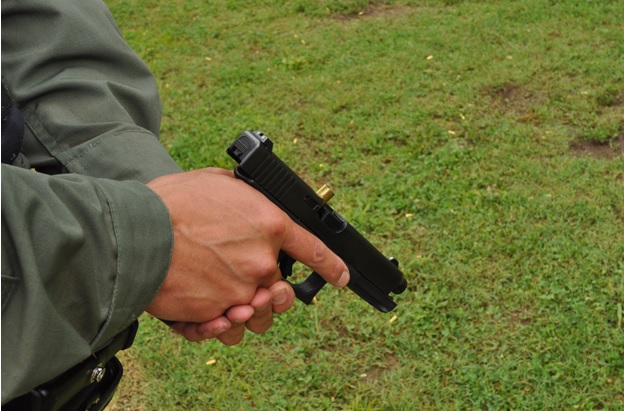Common Gun Failures and How a Gun Kit Can Help You Solve the Issue
Sep 27th 2023
If you’re not familiar, a gun kit, also known as a gun parts kit or a parts kit, is a bundle of gun parts that usually contains everything you need to build a gun minus the frame (frames are controlled by the ATF, must be serialized, and must be transferred through an FFL).
The gun kit, however, does not, and contains basically any gun part you could need to make a repair to your firearm at a moment’s notice, if you experience a failure while at the range.
Most people looking for gun kits are interested in tinkering, customizing, or building their own firearms, but they can also be indispensable for making repairs.
This post will look at something different. We’re going to take a look at some common gun malfunctions and failures and how you can make a fix if you have a kit on hand.
Failure to Feed
Failure to feed, an issue that is more or less exclusive to autoloading arms, occurs when the firearm’s action does feed a new round into the chamber.
The Fix
Failure to feed could be caused by one of several issues:
- Weak return/recoil springs
- Deformed magazine feed lips or follower
- Fatigued magazine spring
If the problem is one of the above, the solution is to replace the affected part. If the magazine itself is damaged, you will need to replace the entire magazine.
It is also possible that a part has not failed and no replacement is necessary. Failures to feed can also be caused when a magazine is not seated properly or the chamber is exceptionally dirty, so investigate these possibilities as well.
Failure to Fire
A failure to fire occurs when the firearm’s action has loaded a round and set, but the firing pin has failed to ignite the primer.
When a failure to fire occurs, keep the gun pointed downrange for several minutes before attempting to inspect the failure.

The Fix
As with failures to feed, there are several factors that can cause a failure to fire. The first thing you want to do is inspect the primer, very carefully.
If there is a well-defined indentation on the cartridge primer, the problem is probably the round.
If there is a weak indentation on the casing rim (for rimfires) or on the primer (for centerfire cartridges) the issue is probably with the gun and there are three main concerns.
- There is an accumulation of fouling on or around the firing pin. Disassemble the action and thoroughly clean it, then reassemble. This issue (if it is the culprit) requires no part replacement.
- The firing pin is damaged or deformed. In this instance, you will want to replace the affected part (firing pin/striker).
- The firing pin spring is fatigued. This is the most likely outcome if the gun was not dirty. Replace the affected spring and the issue may resolve itself.
If you determine the issue is attributable to a gun part, retrieve it from your gun part kit and make the appropriate repair/replacement.
Failure to Extract
A failure to extract occurs when the firearm fires and the action opens but does not extract the spent round. This malfunction can occur in any breech-loading arm that fires cartridges and is one of the most common firearm malfunctions of all.
The Fix
The most common likely cause of failures to extract is that the firearm is particularly dirty. Very dirty chambers can complicate extraction, as can an accumulation of fouling on the slide or bolt around the extractor. If fouling prevents the extractor from engaging the cartridge rim, the firearm may not extract.
If the firearm is not dirty, then the problem is likely one of two:
- The extractor springs are fatigued, in which case they will need to be replaced.
- The extractor itself is deformed, damaged, or has failed and is missing, in which case it will need to be replaced.
Failure to Eject

A failure to eject occurs when the firearm fires and the action extracts the spent casing, but does not eject it clear of the action. Stovepipe jams, in which the spent shell gets jammed in the action as it attempts to reset, are common with failures to eject.
The Fix
There are two common causes associated with a failure to eject. These are:
- Ejector springs that are fatigued, in which the springs should be replaced.
- Deformed or otherwise damaged ejectors, in which case the ejectors themselves should be replaced.
Other Common Gun Parts Failures
Beyond what is covered in this list, the most common parts that fail on firearms are springs, all things considered.
Springs, which are usually made of thin metal and are prone to use-related fatigue incurred by thousands of compression-decompression cycles, are the first parts that fail.
This includes but is not limited to magazine springs, recoil and return springs, firing pin springs, and extractor and ejector springs.
These are the first things you should replace on your gun if you are ever experiencing issues with reliability.
It’s also possible for small roll pins, takedown pins, and screws to work loose while firing and become lost. The good thing about having a gun kit around is that you often can’t buy these parts piecemeal (at least not easily), but a good kit will contain all of them if it is compatible with your platform.
Other than that, a gun kit will also have spares of everything else - grips, barrels, bushings, and other obscure parts that you probably only think about once in a blue moon (if ever) and even then only because you need to replace them.
Gun Parts and Gun Kits
If you’re looking for a gun kit or an obscure gun part, you have a good chance of finding it here. We carry thousands of parts and kits for a wide range of popular firearms, as well as for others that are much rarer.
If you’re looking for something specific and can’t find it on our website either come into our showroom at 50 Hilton Street in Easton, Pennsylvania, or give us a call at 610-250-3960 and we will help you find what you are looking for.

